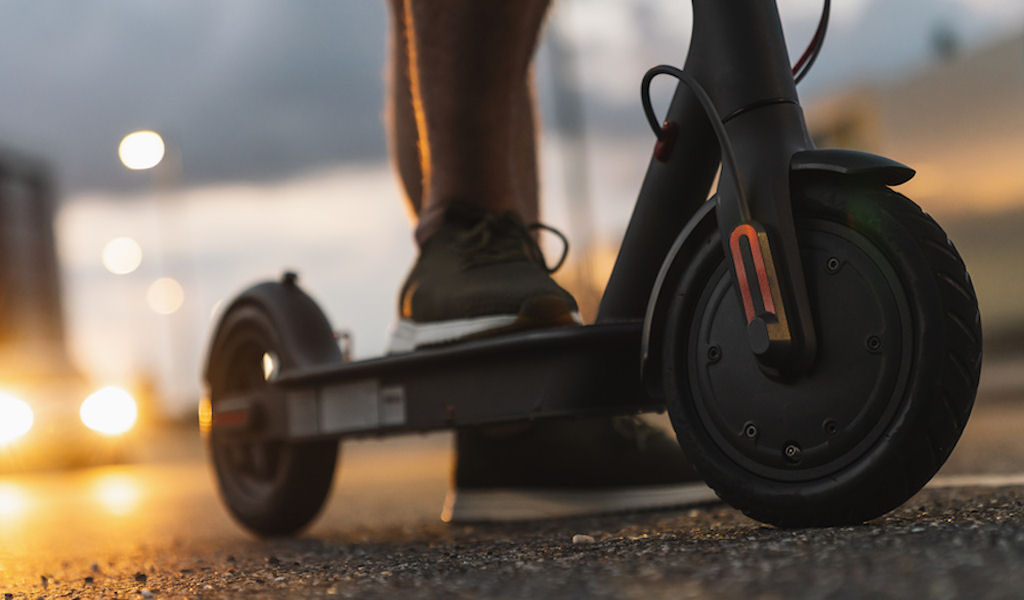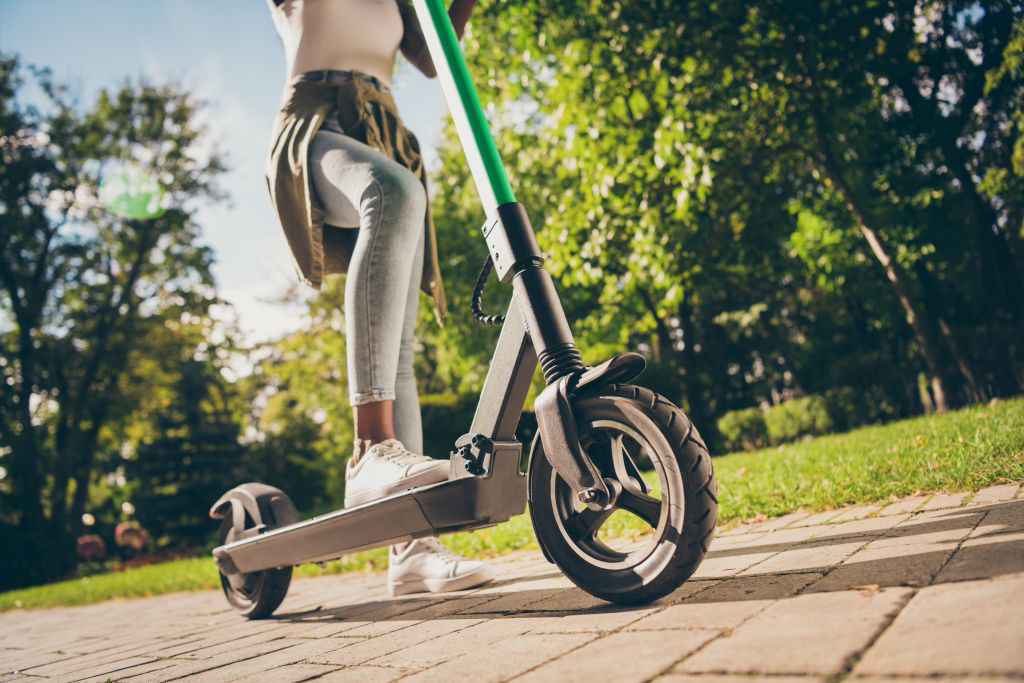Electric scooters are light means of transport. There are more and more of them on our streets, as they are fast and convenient for covering shorter distances. They are especially popular in nice and warm weather, but driving them can also be dangerous.
E-scooters have difficulty stopping in time at higher speeds, are more unstable, and due to the small wheels, there is a greater chance of falling on uneven surfaces. They can quickly become a danger to other road users because their speed, quiet driving and narrow silhouette make them more difficult to spot, and it's even more dangerous if their drivers don't follow the regulations.
The most common causes of traffic accidents are unadjusted speed and non-compliance with the right-of-way rules.

E-scooter drivers are reminded of the importance of following the rules, the correct use of traffic areas, the use of a protective bicycle helmet for all drivers up to the age of 18, the technical flawlessness of e-scooters and the prohibited use of mobile phones and other devices that reduce auditory perception or the ability to control the vehicle while driving.
Advice from the police and rules that e-scooter drivers must follow
Among the conditions for the participation of light motor vehicles, such as e-scooter, in road traffic, the most important are the following:
Mandatory helmet. Drivers of e-skiro must wear a protective bicycle helmet when driving until they are 18 years old.
They should ride on bicycle surfaces. Light motor vehicle users must ride in cycle lanes, cycle tracks or cycle paths. Where these traffic surfaces do not exist or are not passable, they may drive on the right edge of the directional carriageway of the road in the settlement, where the maximum permitted speed is limited to 50 km/h.
They must slow down in pedestrian areas. E-scooter drivers are also allowed in the pedestrian area, but only in such a way that they do not endanger them, namely, they must adapt the manner and speed of their movement to traffic conditions, and their speed must not exceed the maximum possible speed of pedestrian movement.
At night only with lights. A light motor vehicle must be properly marked with lights and reflectors at night and when visibility is reduced.
Transportation of other persons is not permitted. It is forbidden to transport other persons on the e-scooter. Transportation is exceptionally permitted if the manufacturer has provided for it (the fifth paragraph of Article 97a of the Road Traffic Rules Act). Persons may be transported only by an adult (paragraph eight of Article 93 of the Road Traffic Rules Act).
Driving is prohibited for children under 12 years of age. Under the provisions of the Drivers Act, children aged between 12 and 14 are allowed to drive light motor vehicles if they are in possession of a bicycle licence, and persons over 14 years of age.
Only vehicles that can drive up to 25 km/h are allowed. The use of light motor vehicles whose constructional defined speed exceeds 25 km/h or are wider than 80 cm, light motor vehicles without a steering wheel and miniature motor vehicles in road traffic is not permitted.
Dangerous use of mobile phones while driving. While driving, the driver of the e-scooter must refrain from any actions that would reduce his auditory or visual perception in road traffic.

E-scooter drivers must pay even more attention to other participants. E-scooters are very quiet vehicles due to their electric drive, and pedestrians usually only hear them when they are almost in their immediate vicinity. Therefore, e-scooter drivers must pay even more attention to the behavior and movements of other road users, especially the most vulnerable, i.e. pedestrians.
Extra caution is not superfluous. E-scooter drivers are advised to drive especially carefully with gradual braking and advised against using them on wet roadways.
Beware of thefts! In order to prevent the theft of these not-so-cheap means of transport, e-scooter owners are reminded to take self-protective measures, such as parking in designated spaces, locking them, etc.

